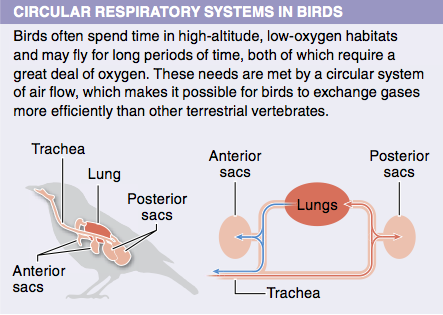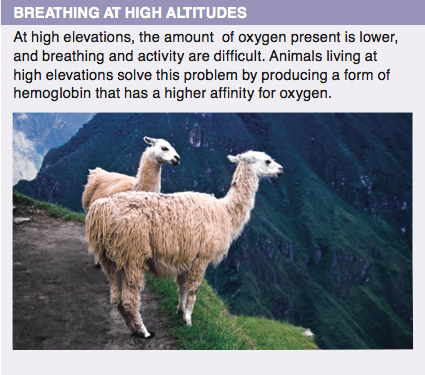
Chapter 21. Chapter 21: Circulation and Respiration
Review & Rehearse

Instructions
Review the visual summaries and answer the essay questions below.
Make sure to enter a brief response that completely answers each question and explains your reasoning. When you click "Submit," you will be provided instant feedback, allowing you to check if your response is correct.
(This activity contains 18 total essay questions. Each new question will be revealed once you complete the preceding question.)
1.


1. Why has the evolution of multicellular organisms led to the development of circulatory systems?
2.

2. What characteristic distinguishes closed and open circulatory systems?
3.

3. What is the difference between single- and double-circuit cardiovascular systems? Which would be better suited for a higher energy demand? Why?
4.
4. In which part of the circulatory system does the blood pick up oxygen and lose carbon dioxide?
5.



5. A malfunction in which part of the heart sometimes requires an artificial pacemaker?
6.
6. Why is it that if you cut into an artery you are more likely to have blood spurt all over you than if you cut into a vein?
7.
7. Describe the three main types of cells (or cell fragments) found in blood and their primary functions.
8.
8. Describe some of the health risks associated with high blood pressure.
9.
9. Describe three behavioral changes everyone can make to reduce their risk of heart disease and heart attacks.
10.

10. How does lymph travel around the body?
11.


11. How is gas exchange accomplished in animals with gills and in those with lungs?
12.

12. How does hemoglobin “know” when to release the oxygen it is carrying?
13.

13. Explain how the countercurrent exchange system increases the efficiency of gas exchange in fishes.
14.
14. How do amphibians cope with their small lung capacity (relative to mammals)?
15.


15. Why don’t birds pass out from lack of oxygen when they fly at high altitudes?
16.

16. Which action causes air to be forced out of the lungs during exhalation?
17.


17. How does low air pressure at higher altitudes affect the availability of oxygen for breathing?
18.

18. Would you expect hemoglobin to be more or less “sticky” in individuals living at higher altitudes? Explain your answer.
Activity results are being submitted...